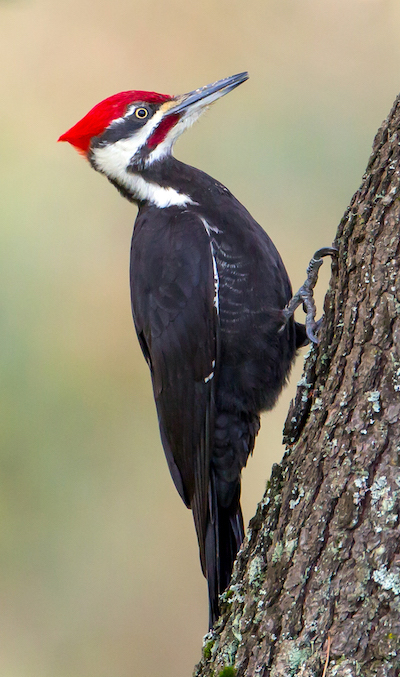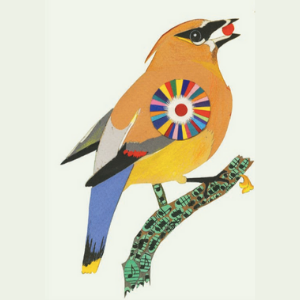The January 2021 issue of Birding magazine features two articles by IBP Staff Biologist Peter Pyle that take us on a deep dive into observing molt patterns in birds using photos or- if you're lucky- a very cooperative bird and good optics. Observing the age of feathers on a bird can tell you a lot about it, and it turns out that you don't always need to have the bird in hand to do some molt detective work.

Pileated Woodpecker. Photo by Mick Thompson/Flickr.
The first article, "The Plumages of the Pileated Woodpecker," takes a look at molt in the American Birding Association's "Bird of the Year" for 2021. You might not think that a Pileated's plumage changes much over the course of its life, but look closer and you can find that variation in the generations of the primary coverts and secondaries allows ageing individual birds up to their fourth year. Pyle and colleague Steve Howell painstakingly figured these criteria out in woodpeckers using museum specimens, and IBP's studies on banded Black-backed Woodpeckers helped confirm them. Peter also discusses the evolution of woodpeckers’ unique molt-replacement patterns.
The second article, "Variation in Winter Dowitchers," is co-authored with a talented young birder, Hannah Floyd, aged 15. It is one of Birding Magazine's regular "Featured Photo" features in which a photographer, Miss Floyd in this case, shares her photos of a bird and the story behind them, and then Peter does a detailed age-determination and species-identification analysis of the bird's plumage to discover more about it. Does your unknown dowitcher have its bill deep in the water? Peter discusses how–with proper consideration of feather age–you can use patterns on the juvenile tertials to distinguish migratory Long-billed from Short-billed Dowitchers in late summer and fall.

Different generations of wing coverts and contour feathers are visible on this Long-billed Dowitcher. Photo by Jamie Chavez/Flickr
For both articles Peter references photographs cataloged in the Cornell Lab of Ornithology's Macaulay Library, accessible on line, highlighting the increasing value of this resource to study the molts and plumages of birds.
Birding magazine is the flagship publication of the American Birding Association. The full-color, award-winning publication is published bimonthly. To receive a print subscription or full online access, join the American Birding Association.






